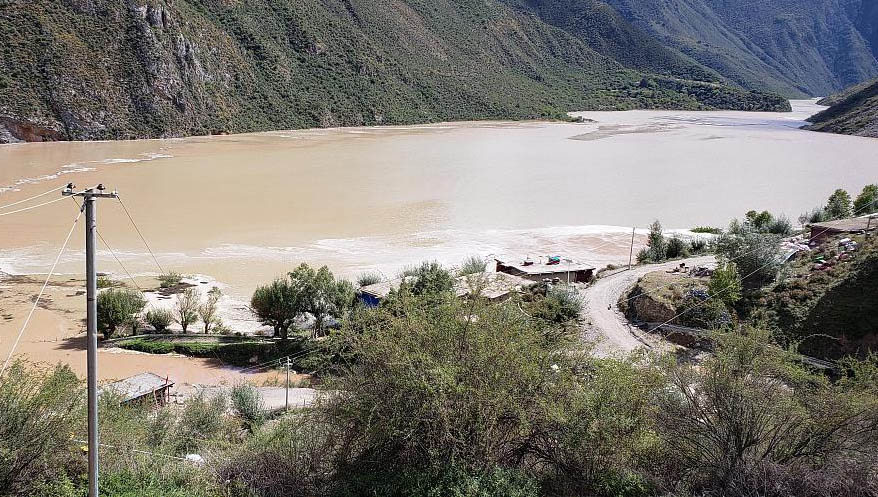
(TibetanReview.net, Oct25, 2018) – China has cited one of its experts as saying a global warming-induced avalanche of ice and glacial debris was to blame for the recent blockage on the Yarlung Tsangpo river in Tibet, the headwater of India’s Siang and Brahmaputra Rivers. China earlier said a total of 7,100 people had to be evacuated as a result of the barrier lake formed by the Oct 17 morning landslide near Gyalha Village in Manling County of Nyingtri City.
The report cited Yao Tandong, described as a renowned glacial scientist and an academician at the Chinese Academy of Sciences, as saying at a news conference that the blockage was caused by an ice avalanche and moraines-unconsolidated glacial debris of soil and rock.
He has said, after conducting a helicopter survey of the region, that there were 16 glaciers above the blockage, with eight of them being under high risk of collapsing and becoming avalanches. Falling material from two of these eight glaciers was stated to have caused the blockage.
The latest ice avalanche was reported to bear similarities to the 2016 incident in Rutog County in Ngari prefecture in remote western Tibet. Both avalanches were due to the rising global temperature causing the glacier to melt and become unstable, Yao has said. He has added that both the places were lightly populated with no major industries, so it is unlikely that local human activity would affect the glaciers.
The Gyalha landslide had barricaded the deep valley through which the river flows, with the blockage creating a 75-meter-deep barrier lake that held 550 million cubic metres of water at its peak, the official chinadaily.com.cn Oct 24 cited the local emergency response bureau as saying.
Dangers of a devastating flood receded as a result of an Oct 19 afternoon breach which reopened the river’s flow. The barrier lake’s water level had subsided by 56 metres on Oct 20. But it was still holding around 100 million cubic metres of water, although the risk of flooding had been “basically eliminated”, the report said.





